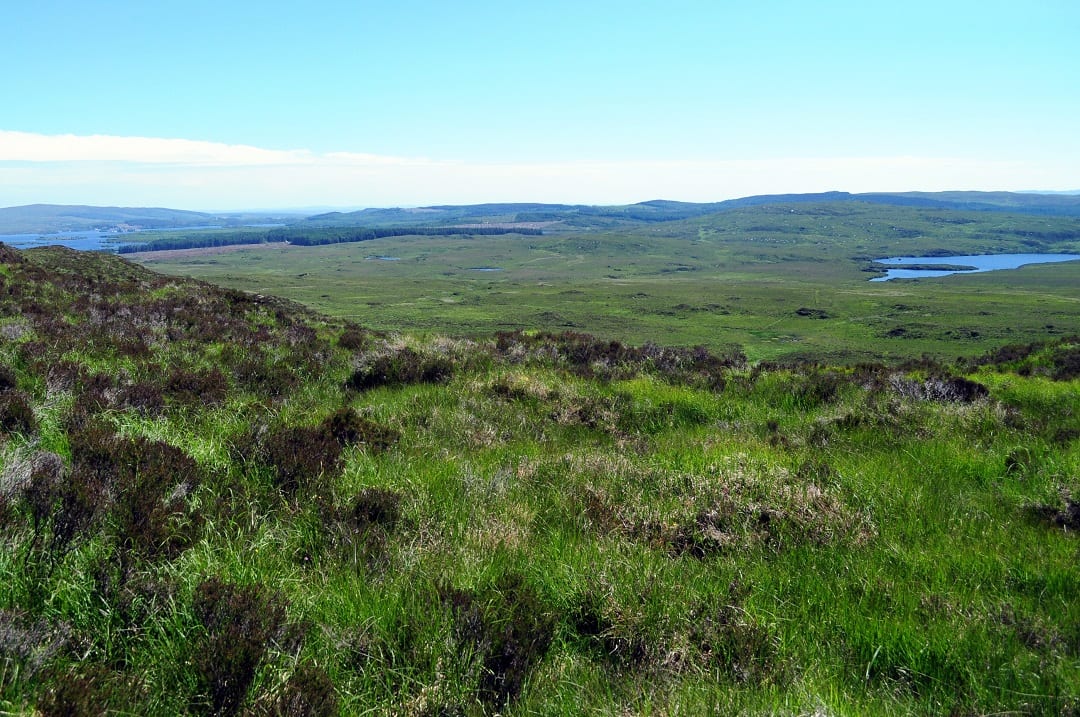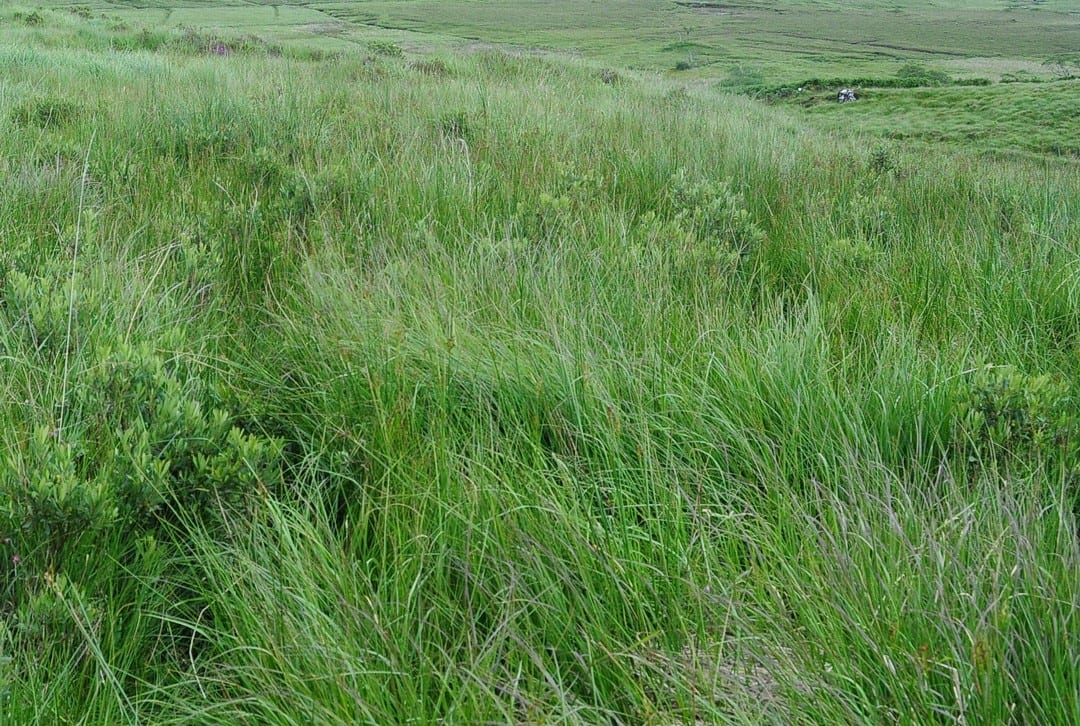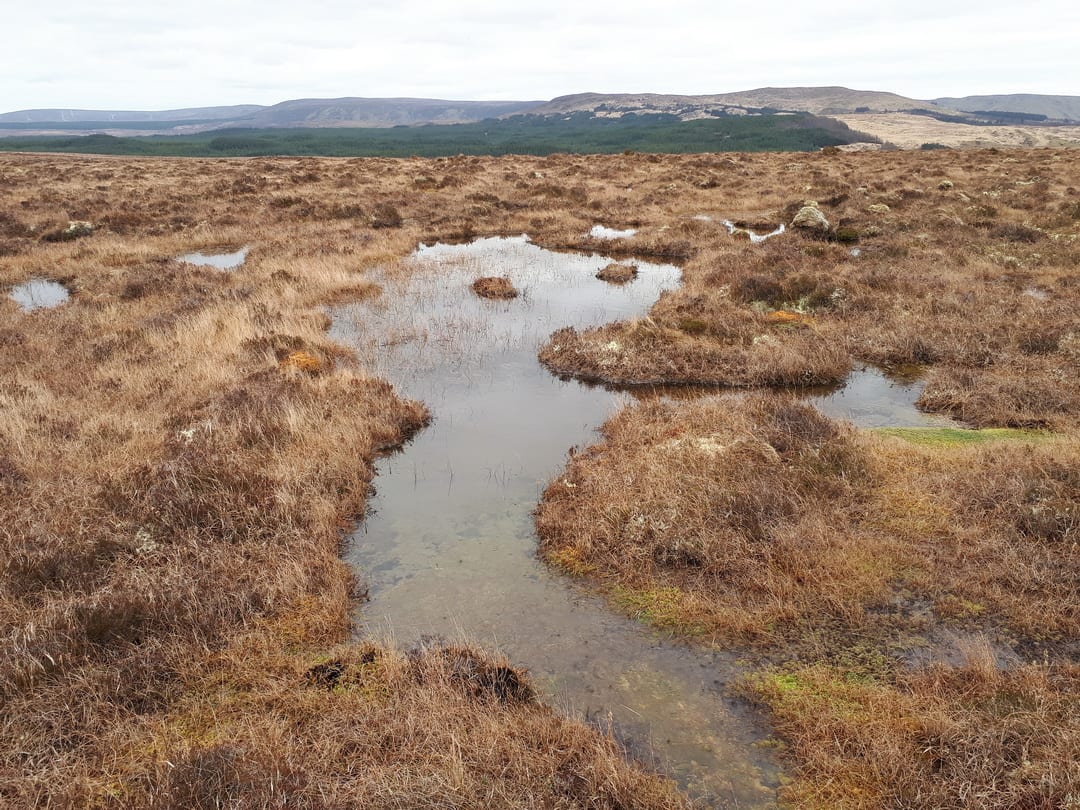BirdWatch Ireland is actively working on peatland Special Areas of Conservation (SACs) in the north west, to restore blanket bog habitats affected by drainage and grazing.
Background
Active bogs provide requisite breeding habitat for some of Ireland’s most vulnerable birds, such as; Curlew, Lapwing and Golden Plover. Bog restoration is also key in helping to reduce global warming and reverse climate change, as bogs sequester vast amounts of carbon from the atmosphere and are a vitally important constituent of the national carbon sink.
Pettigo Plateau/Dunragh Loughs SAC, Donegal

The Pettigo Plateau is an extensive complex of blanket bog, wet heath, lakes and pools located approximately 10 km to the south-east of Donegal Town near Lough Derg. It is a good example of a largely intact, relatively undisturbed peatland and the Pettigo Plateau/Dunragh Loughs SAC was designated to protect just over 2000 hectares of the area. Within its boundaries, the Pettigo Plateau Nature Reserve spans some 900 hectares that predates the SAC.
Owned by the National Parks & Wildlife Service (NPWS), it contains many of the lakes and pools of the SAC. Greenland White-fronted Geese have traditionally used the reserve for winter grazing and roosting, but have become less tied to the area in recent times in favour of improved grassland sites. Golden Plover have been recorded breeding on the site, while Merlin, Pergrine and Hen harrier also use the area for hunting. Important flora includes the rare White-beaked Sedge.
Despite the seemingly perfect landscape here, the SAC has pressures placed upon it. Due to its remoteness, the nature reserve had been lacking direct management and the boundary fence became dilapidated, preventing the controlling of livestock. Blanket bog can benefit from sustainable grazing levels to keep certain bog grasses in check, such as Purple Moor Grass (Molinia caerulea). Too little grazing and the grasses can become rank, smothering the important bog mosses, heathers and sedges. This reduces the species diversity and the ability to be an active, peat-forming bog. Invasive Rhododendron is also spreading in to the SAC.
Working in liaison with NPWS, BirdWatch Ireland took on the task of replacing the Nature Reserve boundary fence with CABB funding, which was completed in Autumn 2018. Prior to this, a baseline habitat survey assessed parts of the reserve, which will act as a benchmark from which subsequent surveys can record the effects of a sustainable grazing regime within the timeframe of the project.

Ox Mountains SAC, Sligo

The Ox Mountains are an extensive upland area in western Sligo and north eastern Mayo. Situated 12 km to the north west of Tubbercurry, the Ox Mountains SAC covers some 105 square kilometres of good quality blanket bog, wet and dry heath and a range of other designated upland habitats, centered around Lough Easky.
Within the SAC, NPWS manages 450 hectares of state-owned blanket bog and wet heath in the townland of Fiddandarry, situated between Lough Easky to the east and the Sligo/Mayo border to the west. The area is prime example of blanket bog flora, including sphagnum bog mosses that are crucial to an active peat-forming bog and unusual plants such as the carnivorous sundews. The health of the diverse range of plant habitat types depends on having a stable, wet water table and minimal trampling of these fragile mosses. Healthy bogs can help absorb and store carbon and regulate water levels entering floodplains downstream.
However, this area of peatland has not been left in prime condition. There are a large number of drainage ditches on site that had been dug prior to state-ownership for the purposes of turf extraction. The area was subsequently earmarked for forestry plantation. Fortunately, neither took place before it came under protection but did leave the blanket bog damaged with drains up to 1 metre deep. While some shallower drains have beeen able to partially rewet and begin the process of revegetating, many require intervention.
The CABB project presented the opportunity for Birdwatch Ireland to help restore this important area of active blanket bog by blocking the drains and allow the bog to slowly return to its former condition. This will be done with a series of dams in each drain, typically made with peat that stops the water flow out of the bog and raises the water levels. The wetter conditions will then encourage sphagnum mosses to recolonise the drains and allow the process of peat-building to begin. BirdWatch Ireland has contracted ecologists to perform the necessary detailed botanical and hydrological surveys of the area and make recommendations on dams, with the plan to as block many of the drains as possible. Specialist machinery will be brought in to build the dams later in 2019 and the hydrological changes will be monitored.


